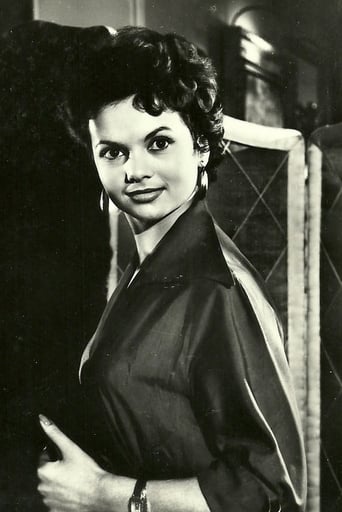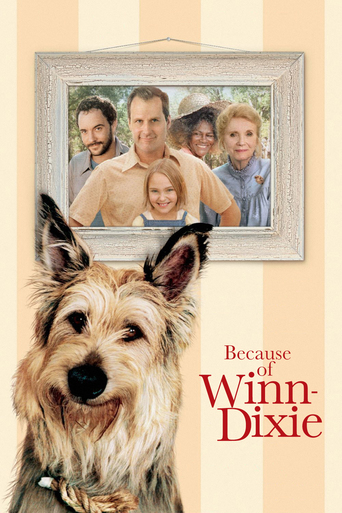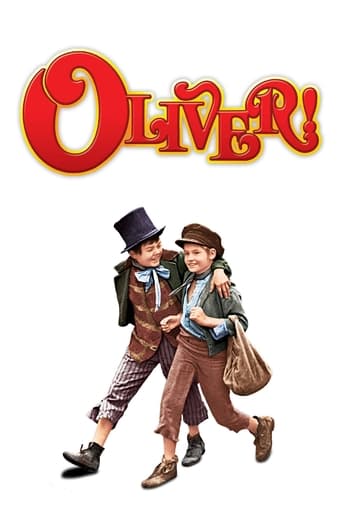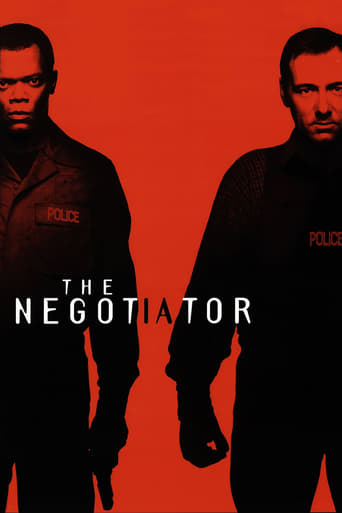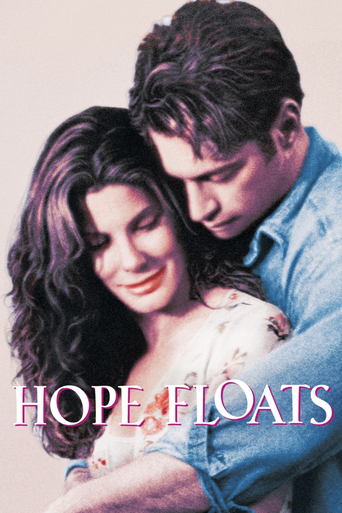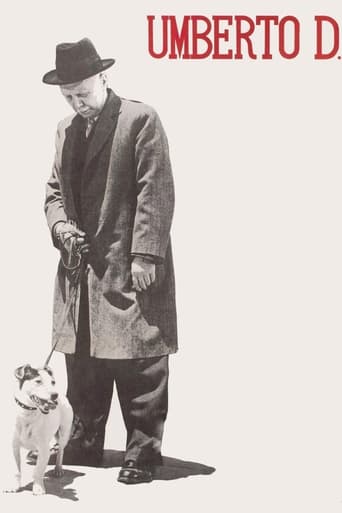
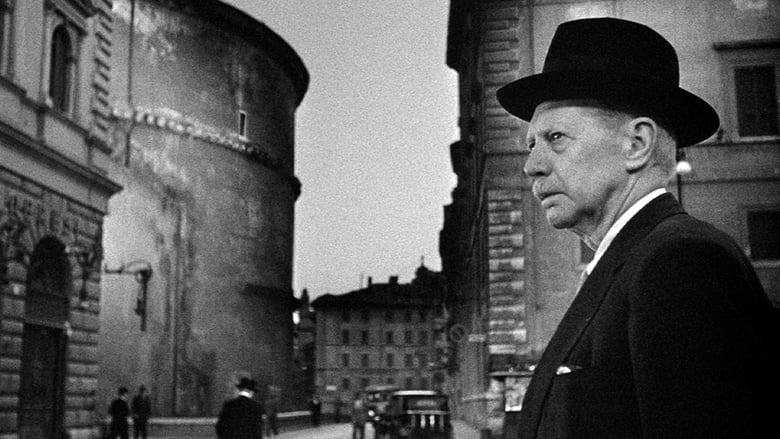
Umberto D. (1952)
When elderly pensioner Umberto Domenico Ferrari returns to his boarding house from a protest calling for a hike in old-age pensions, his landlady demands her 15,000-lire rent by the end of the month or he and his small dog will be turned out onto the street. Unable to get the money in time, Umberto fakes illness to get sent to a hospital, giving his beloved dog to the landlady's pregnant and abandoned maid for temporary safekeeping.
Watch Trailer
Cast
Similar titles

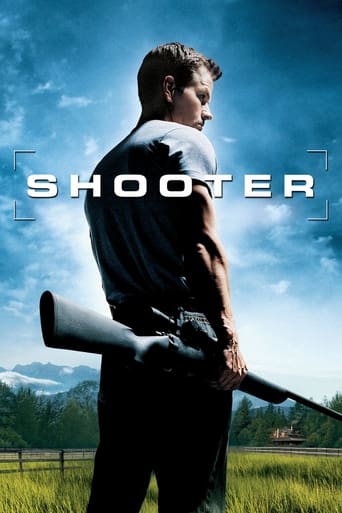
Reviews
Such a frustrating disappointment
I'll tell you why so serious
Crappy film
This movie tries so hard to be funny, yet it falls flat every time. Just another example of recycled ideas repackaged with women in an attempt to appeal to a certain audience.
Labeled by some as the "epitome of world cinema", Neorealism is perhaps tautologically represented by its appeal to genuineness - a call to realism, a display of actual life. Italian Neorealist films like De Sica's Umberto D. embody this overarching value, made apparent by many deliberate choices in production. Top-billed actors in this film are truly not actors at all, but brought to the screen on appearance alone. They live out their own stories, as true to the self as they possibly can be, realizing this powerful authenticity. Antagonists, interestingly, are professional actors cast opposite their usual roles, allowing a small inconsistency with this effort that, to a knowledgeable audience, would provide a short, yet sharp, dose of excitement. The most notable Neorealist pillar shown in Umberto D., however (aside from its setting at the Pantheon, of course), is its use of plot that is not exactly extravagant. The film is about a government retiree, and his loyal, canine companion, who struggle to make ends meet on his pension. A brief side plot exists as he interacts with his building's maid, and these are, more or less, the only large-scale stories told. To borrow from the television series Seinfeld, it's a film "about nothing" - but by telling this seemingly commonplace tale, De Sica opens this life and setting up to something beautiful. The simple story is mirrored by simple shots that other films, including those that came after this movement, would not dare. In one scene, the maid grinds coffee grounds - a task that would, in other films, take seconds - but in Umberto D., it is drawn out to its appropriate, real-life length. Seemingly banal details, like the building's ants, are shown with great intricacy. By placing emphasis on the minutia of day-to-day life, De Sica embodies us in the story, and it overflows with authenticity, making it seem as though the audience could jump through the screen and truly live these moments with the characters.
I mainly posted this review to say that it is my favorite film of all time, and so I was flattered to read here that Ingmar Bergman said that it was his favorite film of all time as well. It is a must-watch as long as you are of the right persuasion and do not buy your movies at Walmart, because you will not find anything blowing up here; no product placement and it was not uber-market tested to appeal to the least common denominator. Nor does it feature played out actors delivering sound bytes disguised as lines. In fact much of the cast of Umberto D. were not even actors. However if you have an attention span longer than that of a flea and know how to appreciate a masterpiece then this is one for you.
Whenever there is a list of classical movies that you just must see, Umberto D is very often among them. It is often said to be an masterpiece, and after seeing it, I can see why people say that. But it wasn't a movie for me.Umberto D is about an old man, Umberto, whose situation is grim. His pension is low, he is facing eviction and his friends are few. Ultimately he doubts his own need and will to live. It is a grim piece of reality. But just so. I can see why people think highly of the movie, but for me I want something else. I need a movie to either entertain me, or to touch me in some way. Umberto failed to do either. It certainly wasn't entertaining, and even though his situation is far from good, the filming and acting is good as well, it just didn't touch me. Somehow it was too ordinary, it was too good at what it aimed to be, a realistic movie. Unfortunately, perhaps.5/10
"It (my film) is the tragedy of those who find themselves cut off from a world they helped to build, a tragedy hidden by resignation and silence, but one that occasionally explodes into loud demonstrations or is pushed into appalling suicides. A young man's decision to kill himself is taken seriously, but what does one say of the suicide of an old man already close to death? It's terrible. A society that allows such things is a lost society." - Vittorio De Sica Vittorio De Sica's "Umberto D" opens on a group of street demonstrators. They're an orderly mass of retirees, all demanding a pension rise. De Sica then focuses on one particular protester: Umberto Domenico Ferrari, a retired civil servant. He shares the name of De Sica's own father, a retried bank clerk, to whom the film is dedicated. Of all his works, De Sica would regard "Umberto D" as his personal favourite. In the West, it is regarded as one of cinema's seminal neorealist works. Upon release (and still in many places today) the film was harshly criticised for its saccharine and sentimental qualities. In truth, the whole neorealist movement tends toward contrived manipulation and sentimentality, often romanticising suffering and sanctifying the impoverished. De Sica would be ignored when he "left" the neorealist movement (in the mid 50s), but some of his best films were made in the 1960s and 70s.After hitting us with a flurry of billboards and angry chants, De Sica has the police arrive and the protests quickly squelched. White handkerchiefs wipe sweaty brows, subtle hints at white-flag surrenders. Men, organisers and union heads then squabble. We learn that the protesters were denied demonstration permits, the state planning in advance its motive for disbanding the crowds. The point is clear: in post-fascist Italy, fascism is far subtler. Cunning and manipulative, the authorities "contain protesters" under the guise of "restoring order" for the majority of the citizenry. What's staggering is the ordered, well behaved methods of both the protesters, the public and the police force. De Sica stresses obedience, professionalism, calm. Throughout the ordeal, traffic flows incessantly, the pensioner's cause invisible.The film then nosedives into its central plot, De Sica watching as Ferrari - who we learn has little money and was depending upon a pension rise - struggles to survive from one day to the next. And so we watch as friends and officials feign deafness when Ferrari asks for help, as landlords turn blind eyes to his plights, and as he pretends to have an illness so as to get admitted into a hospital which offers better accommodation than the outside world.Several scenes follow which resemble De Sica's earlier "Bicycle Thieves", Ferrari selling watches and items in an attempt to generate cash. Much of the film then revolves around Ferrari's attempts to locate his pet dog, which is lost on the streets and being hunted by a municipal pound responsible for capturing and exterminating stray animals. The dog's plight, of course, echoes Ferrari's. Neither seems to have a right to live, both are overlooked, both seem unworthy of care, and both are categorised by a bureaucratic state as being part of a social strata which it deems "necessary", "logical" even, to allow to wither and pass away. All Ferrari's struggles thus have a larger weight behind them, the audience always aware of the political forces obstructing the remedies to the problems encounters. The film then enters Visconti territory, in the way it shows various generations subtly pitted against one another. The postwar economic recovery benefits some, but others have been left behind as the nation moves forward. To the new, remobilized Italy, they are not essential. Ferrari thus exists in a kind of stasis, consigned to anonymity. People see him, but he is too distasteful a reminder, a totem of political memories which post-war Italy seeks to discard. The film ends with hints of suicide and shots of the old, feeble Ferrari inter-cut with happy, playing children; Italy's past and future, old and young. The film as a whole, and its climax, strongly resembles Kurosawa's "Ikiru", released the very same year as "Umberto D".The film boasts clear, crisp black and white cinematography by Aldo Graziati and continues De Sica's use of nonprofessional actors. Ferrari is himself played by Carlo Battisti, a former university professor. Ironcally, De Sica's film found itself, like Ferrari, battered upon release, the state and various film boards ashamed of both its subject matter and style. Indeed, the whole neorealist movement, with its socially investigative qualities, progressive voice and often Marxist overtones, proved worrisome for the Catholic Church and various Italian arms of power. There are even documented cases of Hollywood producers, distributors, studios and financiers pushing for the movement to be squelched (after the US conquered Italy, it extorted many favours from the new governments), as it was cutting into Western profits.Modern viewers unimpressed with "Umberto D" (it's a bit schmaltzy), may want to check out two excellent, similar recent films: "Wendy and Lucy" by Kelly Reichardt (obvious De Sica influences) and "Land of Plenty" by Wim Wenders. De Sica's last masterpiece was the overlooked "Garden of the Finzi Continis".8/10 - Worth one viewing.

